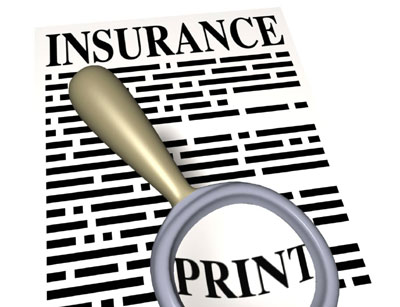It’s intangible benefits such as a sense of fulfillment and our relationships with our coworkers that cause many of us to love our jobs. And we feel satisfaction because we’re moving forward in our careers and our salary covers living expenses.
That’s what a Cigna survey on workplace attitudes< found — but that’s not all. The survey also revealed that while many plan for the future, most people don’t consider the unexpected, such as the loss of income resulting from an illness or injury that keeps someone from working and earning a paycheck.
During benefit enrollment season, most workers focus on medical insurance and, because they don’t understand the value, simply ignore the rest of the benefits available. However, those ignored benefits could provide protection for financial health. It falls to employers to educate their workforce about benefits beyond the “usual,” and it’s a big challenge.
[clickToTweet tweet=”4 steps to helping your employees build a financial safety net” quote=”4 steps to helping your employees build a financial safety net”]
The importance of disability insurance
The Cigna survey of almost 1,400 American workers revealed that most people couldn’t explain what disability insurance is and why it’s needed. This seems to validate the Bureau of Labor Statistics findings that only 39 percent of private industry workers have short-term disability insurance, and even fewer — 33 percent — have long-term disability coverage.
Additionally, 39 percent of those surveyed by Cigna mistakenly believe that the federal Family and Medical Leave Act (FMLA) would cover lost income. When I spoke with Mark Marsters, senior vice president of Cigna’s disability insurance business, he said that’s a mistake. In fact, he explained that the FMLA provides for job protection during an unpaid leave and does not provide for financial assistance. And only three states have legislation covering paid family medical leave.
“Employers need to take a more active role in educating their employees,” said Marsters. “The wrong time to learn about how different types of coverage work and what they provide is when an accident, illness, or injury happens. When a disability occurs, people should focus on their health and not have the additional stress of financial worries.”
Preparing for income loss
American workers are starting to take the right approach, making healthier choices, and even saving money to prepare for the possibility of sickness or injury. However, according to the survey, most are unprepared for long-term loss of income and how quickly day-to-day living expenses can become serious debt. A full two-thirds of American workers live paycheck-to-paycheck.
“Loss of income isn’t just a hardship, it can be a financial disaster for too many Americans,” said Marsters. That’s where, he says, supplemental coverage like accidental injury, hospital indemnity, and disability coverage come in, providing not just financial assistance but resources and support to get people back to work and back to living life fully. This type of coverage can help keep a household afloat, providing for necessities such as mortgage and car payments, food, utilities, and day-to-day living expenses.
The Cigna study did find that while individuals are unlikely to secure coverage independently, they are twice as likely to enroll if it’s an employer-offered benefit option. According to Marsters, a lack of understanding is the main reason individuals don’t opt for disability coverage and other benefits. That’s where employers need to step in. He advises that employers not underestimate their influence.
How to better inform employees
Marsters recommends these four steps to better inform employees about the importance of disability insurance as a component in a financial safety net plan:
1. Get to know your employees The workplace is diverse — millennials and baby boomers think differently and have very different experiences, needs, and concerns. And, the millennial worker will probably want information online while the baby boomer may want to have a one-on-one discussion.
[clickToTweet tweet=”Work with your company’s insurance carrier to educate employees about disability insurance.” quote=”Work with your company’s insurance carrier to educate employees about disability insurance and supplemental benefits and the real-life impact of lost income. “]
2. Educate your employees Work with your company’s insurance carrier to educate employees about disability insurance and supplemental benefits and the real-life impact of lost income. Develop an educational campaign that leverages different communications methods to appeal to and reach across your employee population. During open enrollment, employees often focus on medical and dental coverage; however, other benefits should be equally prominent and not positioned as secondary.
3. Make plans customizable to meet individual needs Individuals at different stages of life have different coverage needs. Once you understand your employees, you are in a better position to develop a variety of offerings that will include something for everyone.
4. Keep it simple Make it easy for employees to decide on appropriate coverage from several options and deliver streamlined online enrollment.
[clickToTweet tweet=”Make it easy for employees to decide on appropriate coverage.” quote=”Make it easy for employees to decide on appropriate coverage from several options and deliver streamlined online enrollment.”]
“Some of the best companies I’ve worked with recognize that employers have a responsibility to educate employees,” Marsters said. “Every company needs productive, satisfied, and healthy employees. An illness or injury can happen to anyone and recovering without a paycheck makes stress, even after returning to work, even deeper. The choices we make during benefit enrollment time last the entire following year. It’s important that employees make educated decisions.”
Join Dana Manciagli’s Job Search Master Class® right now and immediately access the most comprehensive job search system currently available!



